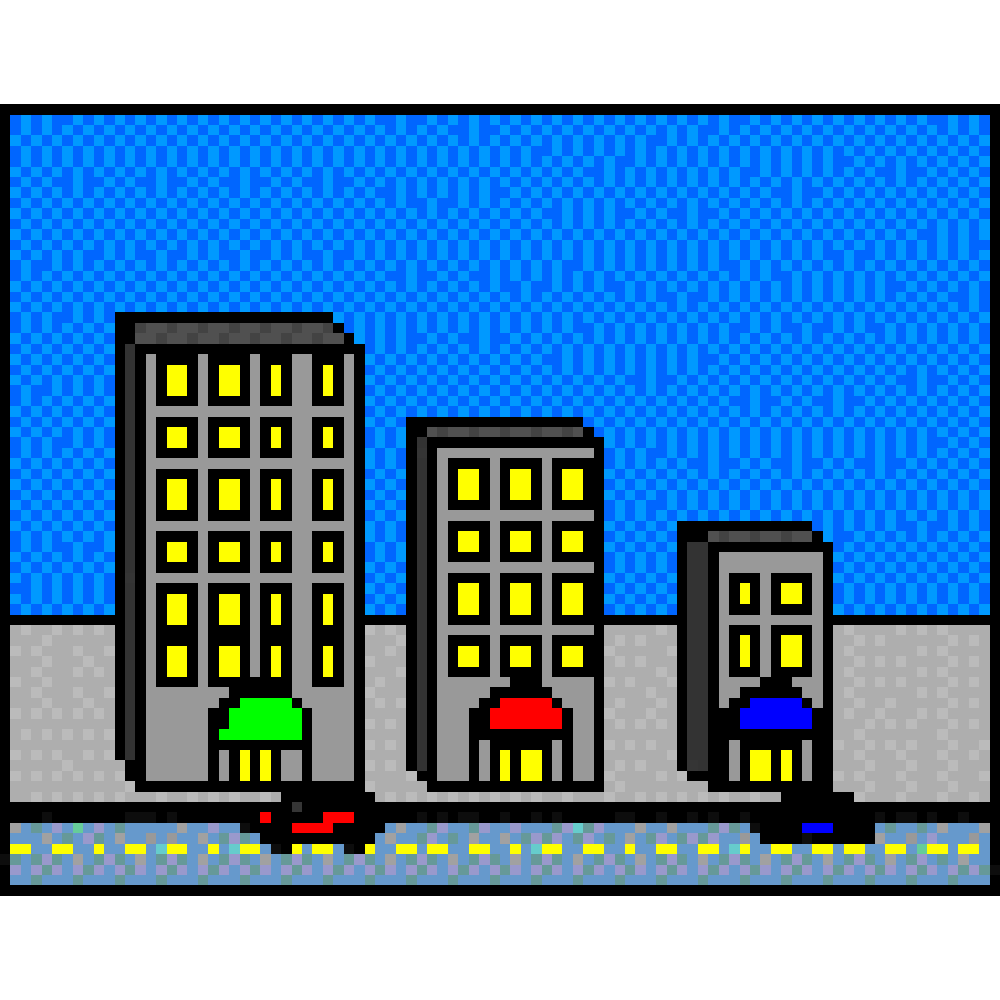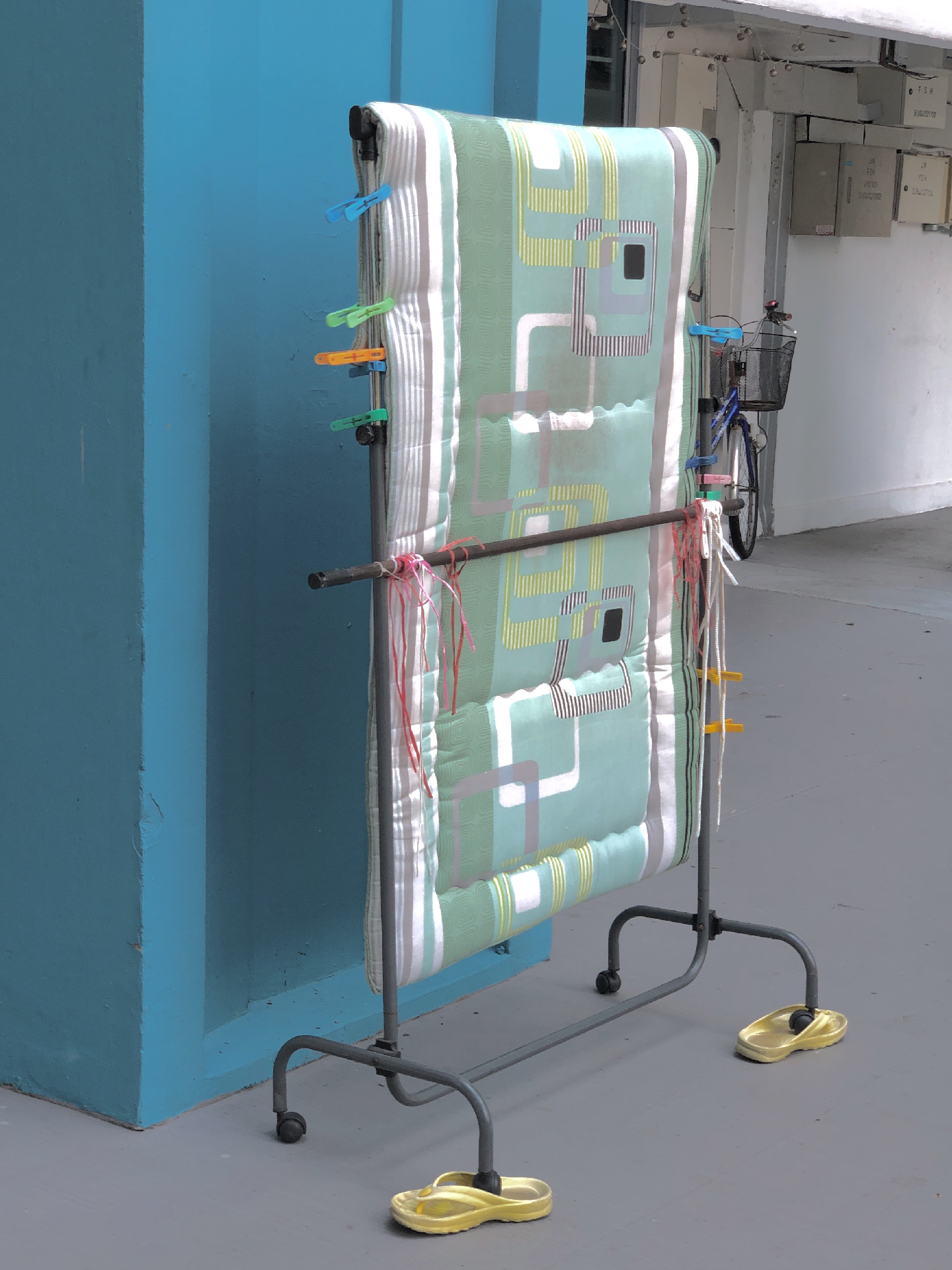
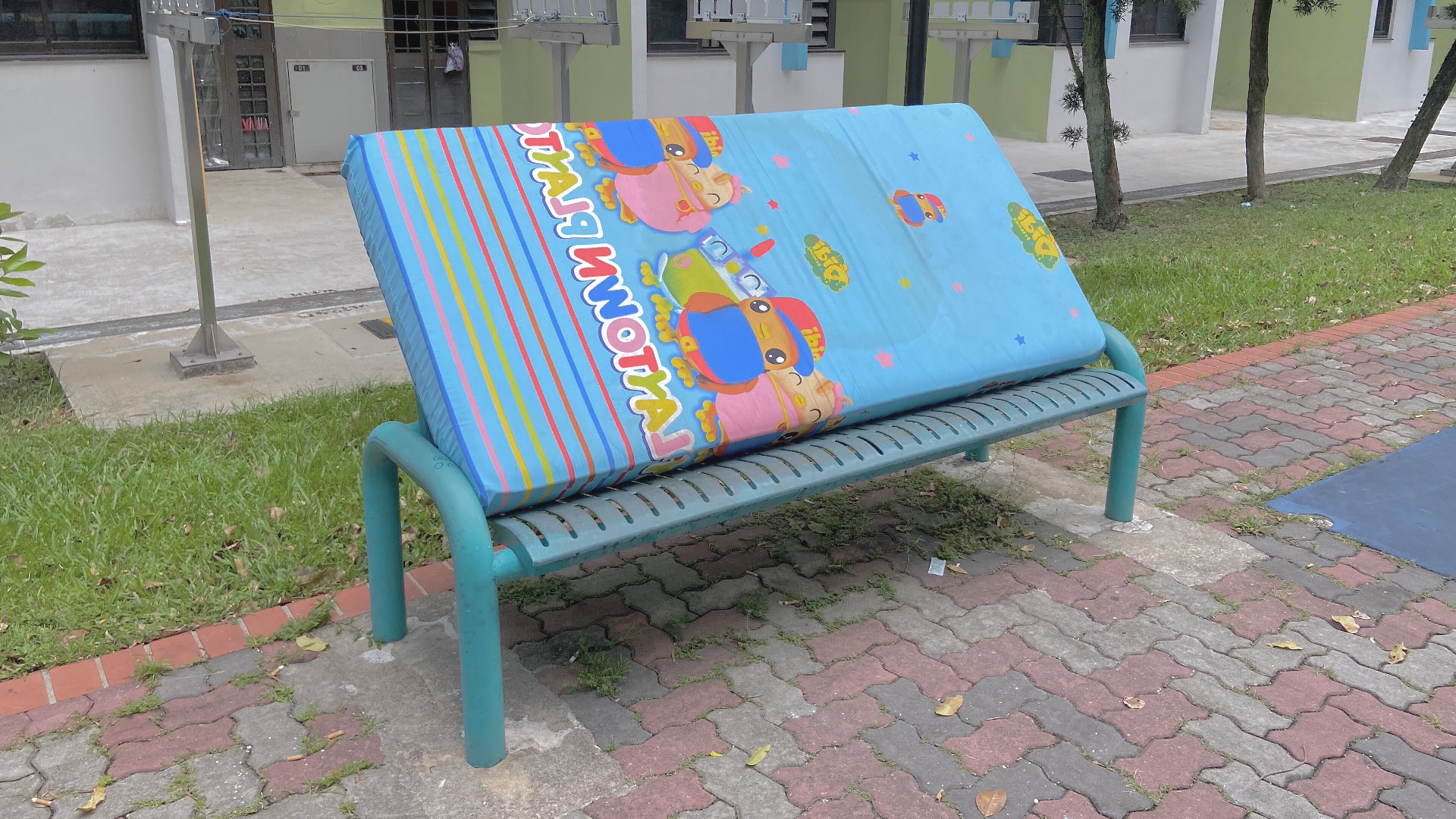
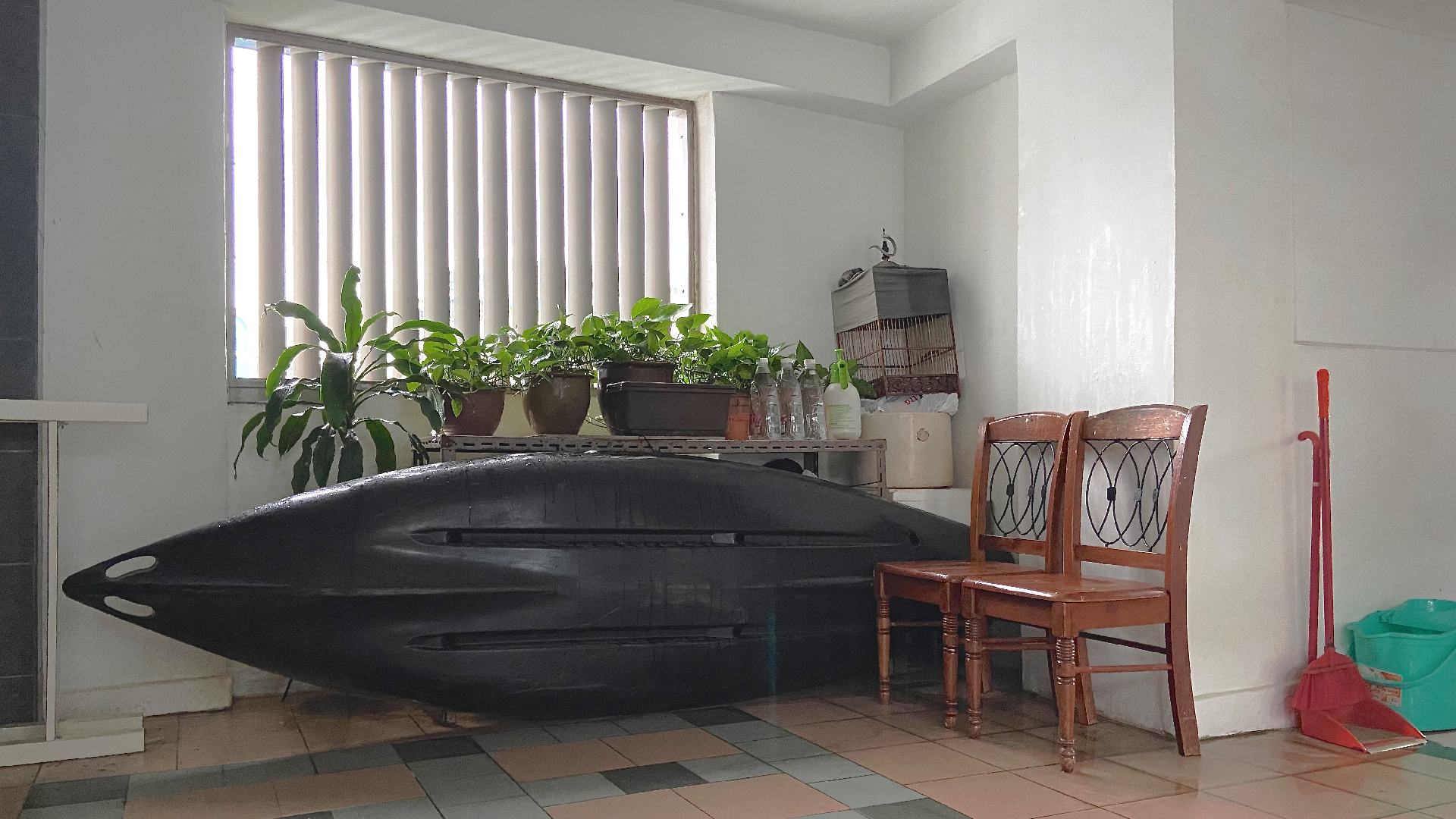

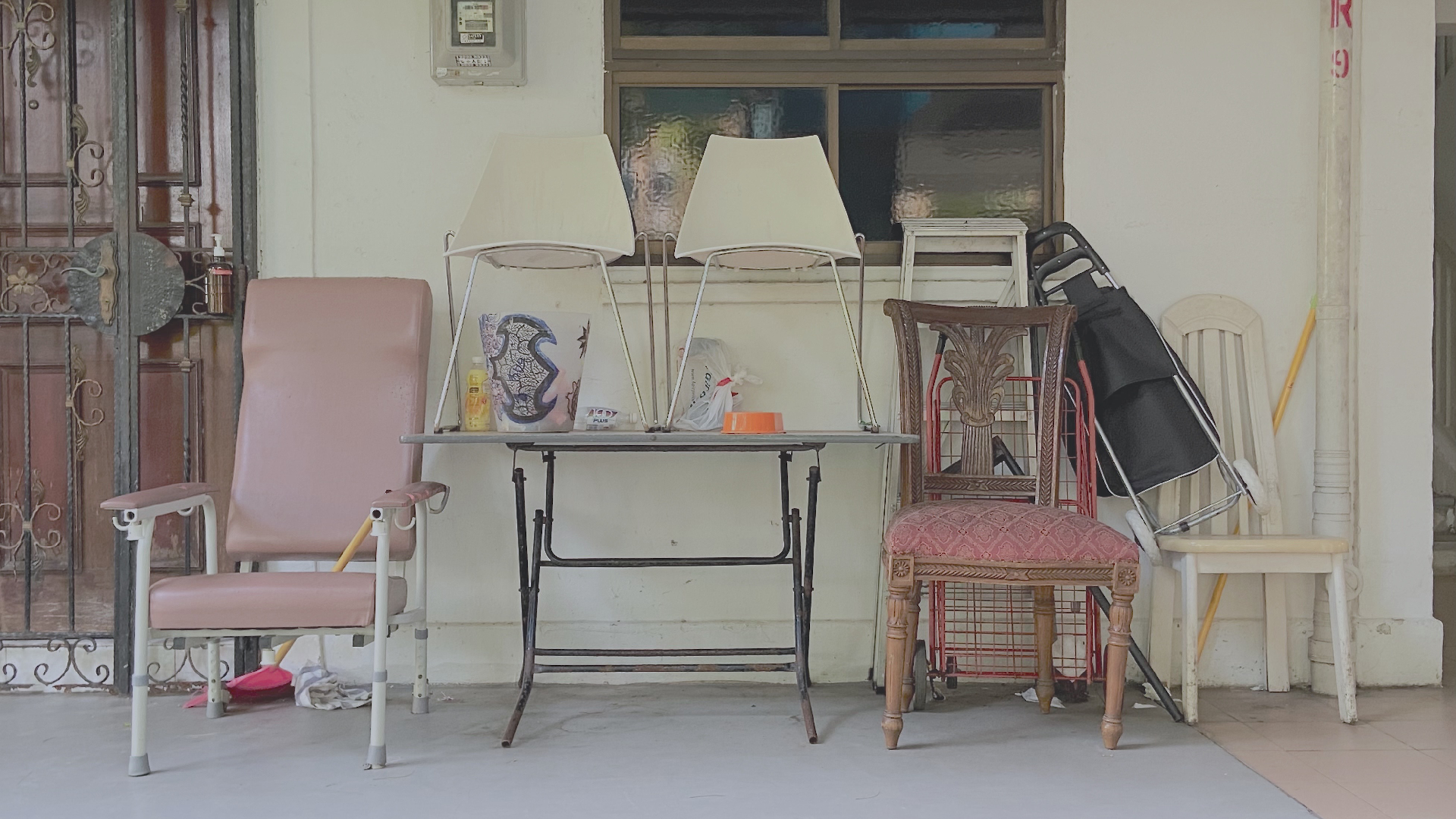

Title
after-party
Year
2022
Medium
Found objects, readymades, potted plants
Dimensions
Dimensions variable
after-party
Year
2022
Medium
Found objects, readymades, potted plants
Dimensions
Dimensions variable
This collaborative work references ‘stray objects’ that the artists have regularly observed in working class neighbourhoods. In such settings, these seemingly random domestic objects—such as a massage chair, a stationary bicycle, and even a parasol—appear to be abandoned, yet have actually been transformed into makeshift storage, shelter, or resting spaces outside of the home. Their presence in common areas defiantly disrupts the boundaries between public and private, but also possesses a secondary contradiction: their resourceful ‘owners’ must accept that the objects and their functions will always be the subject of surveillance, and may even be cleared away outright without warning. As a result, what might otherwise be a welcome space of respite for a resident or worker is also a precarious space of hostility.
To explore the complex social dynamics of this phenomenon, the artists have constructed a dense landscape of secondhand objects and furniture, uncannily accented with readymades that heighten the theatricality of the original arrangements.
To explore the complex social dynamics of this phenomenon, the artists have constructed a dense landscape of secondhand objects and furniture, uncannily accented with readymades that heighten the theatricality of the original arrangements.
Interview with the artists
Q Curators
This installation was inspired by the objects and scenes one often encounters in liminal public spaces around housing estates. What attracted you to these scenes initially, and what do they represent in the context of this work?
In developing this work, we constantly revisited questions such as, “How does rest look like for working class folks? Is rest something everyone can afford? Is rest safe?” Rather than focusing on everyday objects as individual components and the liminal nature of the spaces they inhabit, our work attempts to highlight the inconspicuous hostilities which often loom over resting sites.
From our observations, the cluttering of seemingly abandoned household objects in working class neighbourhoods—outside of the actual residential spaces—are a common sight. But hoarding and clutter is not exclusively an issue for the economically challenged. The rich are familiar with it too, except they can afford to keep it obscured. Clutter is more visible for people like us, because having extra space for shelter and storage is a luxury many of us cannot afford.
Furthermore, these gatherings of stray objects often transform otherwise cold and unutilised (public) spaces into makeshift lounging spots. But at what cost? Concerns over safety hazards and associated risks are just as important and very real. Often unnoticed, our corridors and staircases have become hostile contested spaces kept under constant watch; where you rest and lounge at your own risk.
From our observations, the cluttering of seemingly abandoned household objects in working class neighbourhoods—outside of the actual residential spaces—are a common sight. But hoarding and clutter is not exclusively an issue for the economically challenged. The rich are familiar with it too, except they can afford to keep it obscured. Clutter is more visible for people like us, because having extra space for shelter and storage is a luxury many of us cannot afford.
Furthermore, these gatherings of stray objects often transform otherwise cold and unutilised (public) spaces into makeshift lounging spots. But at what cost? Concerns over safety hazards and associated risks are just as important and very real. Often unnoticed, our corridors and staircases have become hostile contested spaces kept under constant watch; where you rest and lounge at your own risk.
On the one hand, you’ve placed an importance on being ‘faithful’ to the sensibility of the original scenes—for example, by collecting secondhand objects that people were giving away or selling at low prices. On the other hand, this work also stems from a strong intention to stage; to design this performative version of reality. How do you balance these tensions?
One of several things that really struck me while living in Singapore in the past couple of years is the interactions I’ve had with these everyday objects along the corridors. In our attempt to make sense of things, these seemingly frivolous objects often play a significant role in shaping our ideas and speculations around the personalities and living conditions of their owners. With after-party, we wanted to establish a lingering sense of familiarity through the configuration, placement, and pairing of these found objects.
‘Balance’ is something we both raised up quite a bit in the process of materialising this work. It was crucial for us that we try to emulate the original scenes, but we were also very aware and certain that we did not want to make a direct replica or reproduction. We both acknowledged that there is an effortless and ingenious quality about how these makeshift lounges were formed. There were definitely creative parameters put in place as well; nothing too funny, nothing too “trying”, cheap and free things only, nothing too specific, and flamboyant objects (but not too dramatic) are always welcome. Taking chances and being spontaneous were also aspects we were very keen on from the beginning.
How did this collaboration come about? How have your individual practices influenced the development of this work?
We got acquainted through a mutual friend when Khairullah was looking for models to photograph for a separate work. He later asked if I would like to work together with him for another project. Perhaps you could say that after-party is one of the many iterations of that ongoing research. Working on this project has definitely challenged my perceptions to consider alternative ways of reading objects; rethinking its functions and histories.
I think it is also important to note that both of us were already experimenting with approaches that were inter- or multidisciplinary in nature, and that involved collaborative efforts. Having Nghia Phung on board for this presentation really opened up so many new viewpoints for me that would have probably gone unnoticed otherwise. Our respective sensibilities with regard to ideas and aesthetics are clearly dissimilar and at times even contradictory, but in my opinion, that kind of unanticipated energy was what both of us were desperately looking for throughout the entire process.

Biography
Khairullah Rahim (b. 1987, Singapore) works across objects and their replicas, installation, painting, and the moving image. His practice looks into strategies of resourcefulness in an environment of surveillance, and has a particular focus on marginalised communities. This is further informed by the emotional conflicts stemming from his upbringing in a working class family from an ethnic minority. Khairullah’s work has been exhibited in the Singapore Biennale (2019), as well as in solo and group presentations in Singapore, Hong Kong, Taiwan, Thailand, the United Kingdom, and the United States. Currently, he is an adjunct lecturer at his alma mater, LASALLE College of the Arts (Singapore) and a MFA Visual Arts candidate at Rutgers University, New Jersey. He is represented by Yavuz Gallery (Singapore/Sydney).
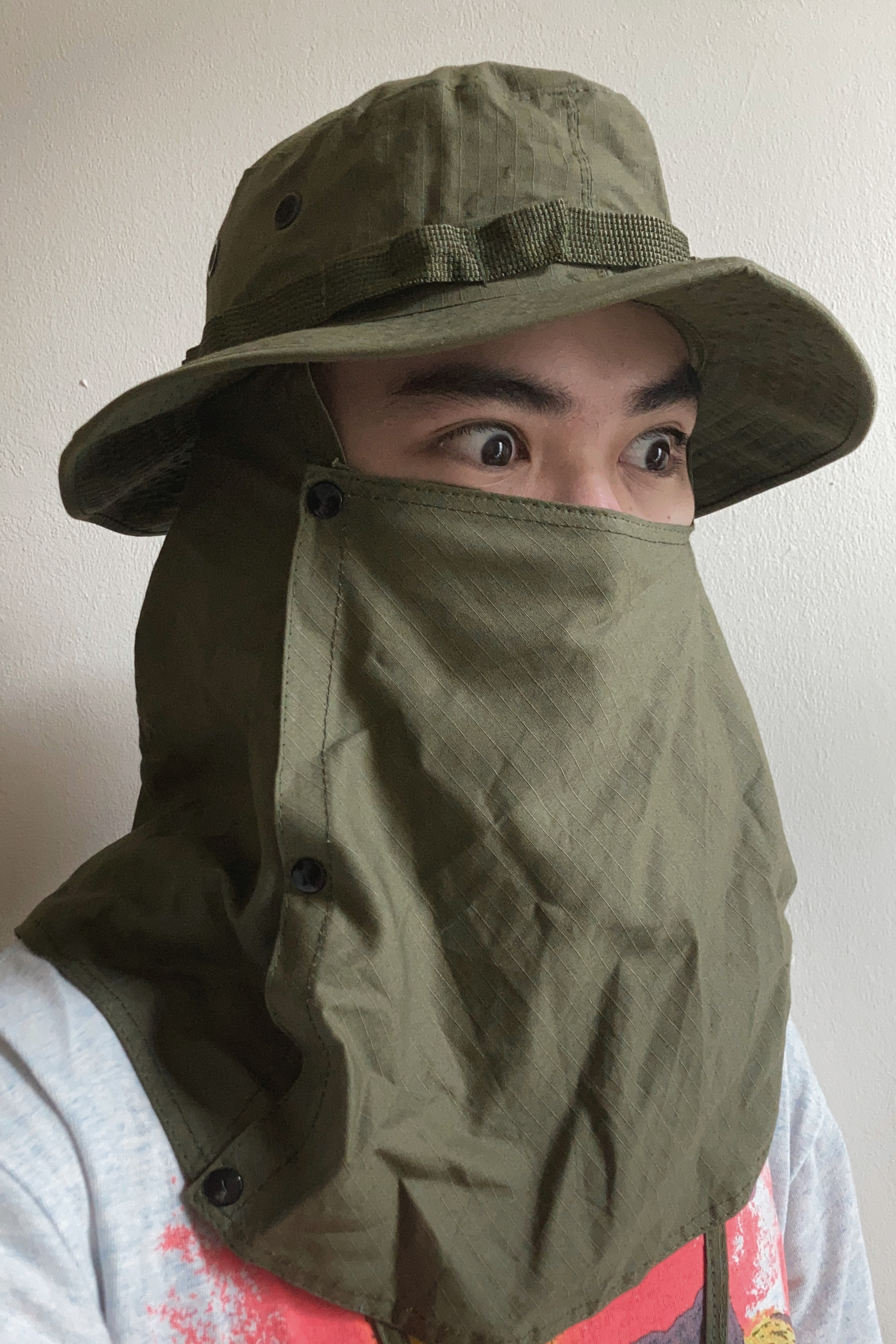
Biography
